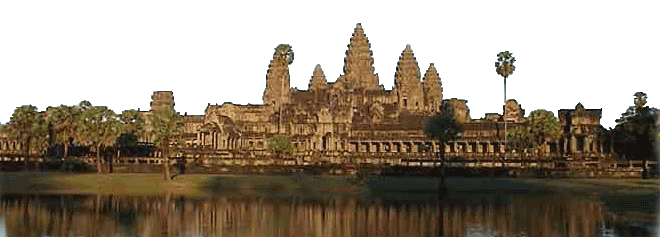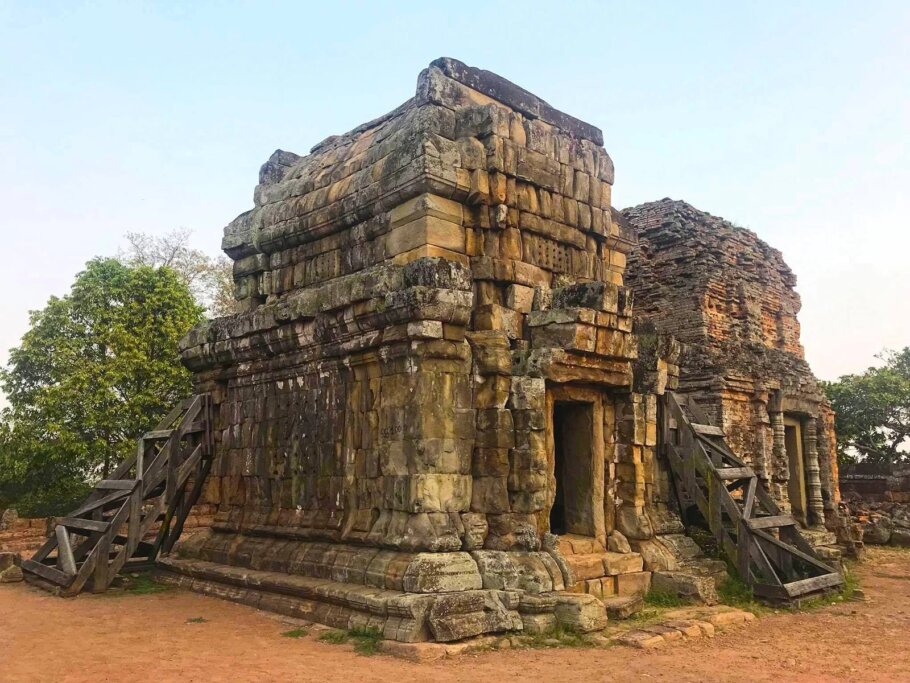Cambodge temple d'Angkor - Phom Krom

Cambodge temple d'Angkor
PHNOM KROM*
Constructed Late 9 th , early 10 th century
Religion : Hindu
Style Bakheng
King Yasovarman 1 st
Localisation :
Au Sud de Siem Reap, sur la droite de la route qui mène au Lac Tonle SapCommentaire :
Phnom Krom (Phnom: la montagne Krom : en aval) est un temple hindouiste qui aurait été construit soit sous le règne de Yaśovarman I (889-910) ou sous le règne de Yaśovarman II sur une colline naturelle d'une altitude de 140m au sud-ouest du site d'Angkor.
Yaśovarman I est connu pour avoir notamment transporté la Capitale de Hariharalaya à Yashodharapura qui restera la Capitale pendant 600 ans[.
Dans son désir de restaurer l'unité du royaume, Yaśovarman II décida de fixer l'habitat de sa population dans la zone nord du Tonlé Sap dans la perspective de se rapprocher de l'imaginaire mythique Mont-Méru [].
Le Phnom Krom a été dégagé en 1938 par l'équipe du conservateur Maurice Glaize.
Location:
South of Siem Reap, on the right side of the road leading to Tonle Sap Lake
Comment:
Phnom Krom (Phnom: Krom Mountain: downstream) is a Hindu temple believed to have been built either during the reign of Yaśovarman I (889-910) or Yaśovarman II on a natural hill 140m high southwest of the Angkor site in Cambodia.
Yaśovarman I is known, in particular, for having moved the capital from Hariharalaya to Yashodharapura, which remained the capital for 600 years.
In his desire to restore the unity of the kingdom, Yaśovarman II decided to establish the habitat of his population in the northern area of Tonle Sap in order to approximate the mythical Mount Meru.
Phnom Krom was excavated in 1938 by the team of curator Maurice Glaize.



